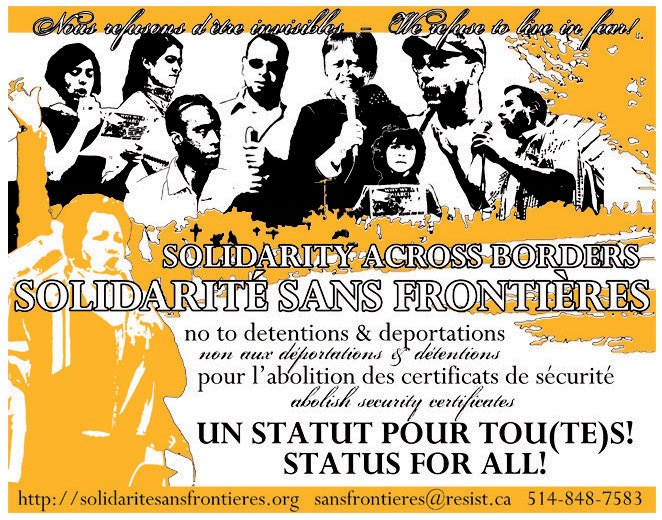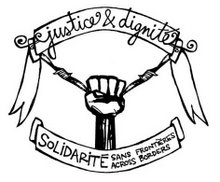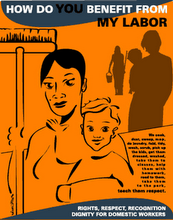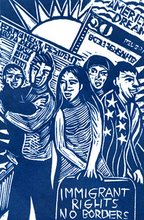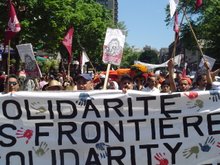By Caylan Ford and Joan Delaney Epoch Times Canada Staff | Jan 03, 2008 |

Since the era of Pierre Trudeau and Brian Mulroney, Canada has been viewed by governments and international bodies the world over as a leading example of the successful accommodation of ethno-cultural diversity.
The United Nations, the World Bank, and several developed nations have looked to imitate the Canadian model of multiculturalism in their policies, and political leaders have called Canada the most successful pluralist society on the globe.
Indeed, since 1971, Canada's practice of encouraging its diverse ethnic communities to preserve their heritage — as opposed to assimilating into the dominant culture — has been one of its defining characteristics, trumpeted by our leaders as being precisely what makes this country great.
Yet in 2007, the multicultural model came under intense scrutiny — a trend likely to continue into 2008 — and many now argue the policy has outlived its usefulness.
Canada continues to have the highest per capita immigration in the world, taking in an average 250,000 new immigrants per year.
In Citizenship and Immigration Canada's 2007-2008 Report on Plans and Priorities, CIC Minister Diane Finley said immigration will account for all of Canada's net labour force growth within the next 10 years. And within the next 25 years, it will account for all of the country's net population growth.
"Immigration is vital to Canada's cultural diversity and economic prosperity," said Finley.
With an aging workforce and fertility rates well below replacement levels, bringing in more immigrants is something Canada's very future depends on. And our multicultural policy has made it one of the most desirable destinations for immigrants.
But how well are these new immigrants adjusting to life in Canada? Recent studies have shown that many newcomers do not self-identify as "Canadian," perhaps by virtue of their ability to retain their native traditions and remain culturally distinct from mainstream Canadian society.
A 2007 study showed, for example, that visible minority immigrants are less likely to identify themselves as Canadian, less likely to vote, and less likely to trust fellow Canadians. The statistics for the children of newcomers were even more dismal.
Many have believed that Canada's official multiculturalism rendered it impervious to the type of racial divides the plague much of Europe. Yet findings such as this one suggest that multiculturalism — at least in its current form-may instead exacerbate feelings of racial exclusion by sanctioning cultural distinctions.
In 2007, these cultural distinctions were often at the heart of the news in French-speaking Quebec.
In the Quebec town of Herouxville, which doesn't have a notable immigrant community, the local government passed a code of conduct for immigrants. Among other things, the code prohibited the burning and stoning of women and endorsed women's right to drive, write cheques and choose their own spouse.
Canada's reputation as a tolerant, pluralistic society received another blow in Quebec last spring when Action Democratique du Quebec leader Mario Dumont campaigned on the premise that accommodating religious practices had gone too far.
The ADQ party's popularity jumped from four to 41 seats in the March election.
It was on the heels of this that Quebec Premier Jean Charest ordered a series of hearings on the issue of what constitutes the 'reasonable accommodation' of immigrants, which took place in 17 locations across the province between September and December.
The sentiment expressed in the hearings ranged from concerns that immigrants' values and customs will damage the province's hard-won secular way of life, to outright prejudice against non-Francophone cultures.
An October poll published in La Presse found that a large majority of Quebecers are against accommodating religious minorities. For instance, as many as 70 per cent opposed allowing Muslim girls to wear the hijab while playing soccer and 65 per cent thought the hijab should not be allowed in schools.
But Quebec may not be the canary in the coalmine, signaling the beginning of the end of Canadian multiculturalism.
"Quebec clearly has a special concern over identity," says Elliot Tepper, a professor of political science at Carleton University and author of a number of studies on multiculturalism and diversity issues.
"They have a longstanding core issue of identity within the Canadian Confederation. What we're seeing today is just one more example of that deep-seated concern."
Lawrence Berg, Canada research chair in human rights, diversity and identity at the University of British Columbia, believes that Canada need not rethink multiculturalism altogether, but instead simply work harder to help new immigrants integrate while at the same time being more accommodating and respectful of the traditions they bring with them.
"It's not that immigrants are choosing not to integrate, it's that it's very difficult to integrate."
Canada needs to be more accommodating of immigrants' religious differences and "the requirements that come from those cultural and religious differences," he says.
Among the barriers to integration, says Berg, is a "low-level, background racism" present in Canada that immigrants encounter in their daily lives. Because of this, many often prefer to remain within their own communities, which can result in the formation of "ethnic enclaves" in cities.
As for the risk of Canada losing its own culture in the effort to accommodate newcomers' differences, Tepper says the "integration aspect" of immigration over time has meant that the country has evolved and adapted with each new wave of immigrants.
"Cultures are either growing or dying. Ours is not dying. It's evolving rather well; it's evolving in a very cosmopolitan fashion."
